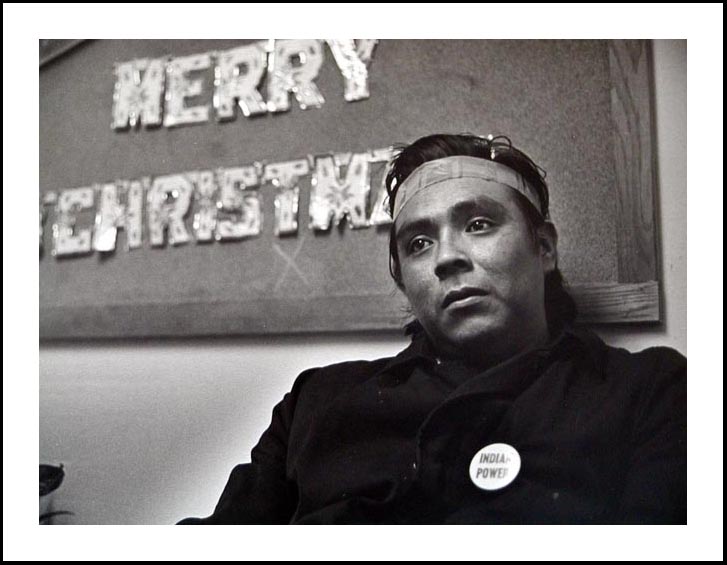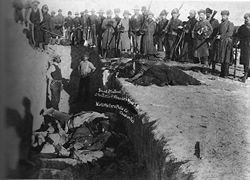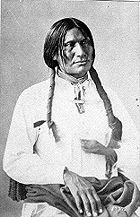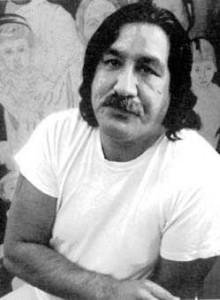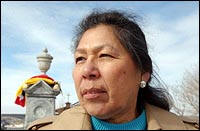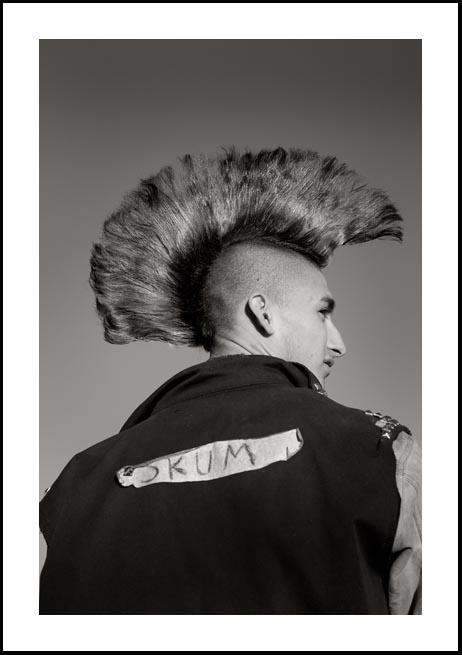Marvin, a Pima Indian from Arizona, AIM takeover of BIA offices,
Chicago, Christmas Eve 1970
photograph by Bruce Berman ©2009
Dec. 29, 2009 / Wounded Knee Day
This is Wounded Knee Day. It calls for remembrance.
In the 120 year aftermath, the victims of Wounded Knee have still not received justice, let alone, widespread acknowledgment of the murders of nearly 300 Native American people, murders that capped almost two hundred years of aggression against America’s original residents..
Wounded knee was the end of the mythology of the Good America. It was the end of any illusion that the Indian Wars were anything other than raw power applied to a land grab.
What was Wounded Knee?
Wounded Knee is a place in the southwestern corner of South Dakota. It is a name that can singe your soul. To know the name is to have regrets. 119 years after the incident at Wounded Knee there is still no justice for the crimes committed there and for other crimes committed in the centuries that preceded it. As every group in America demands its “justice,” as every delivery of justice seems to descend into same old, nothing seems to scream for justice more than does the war crimes committed at Wounded Knee. It is the living and breathing symbol of the truth of the Post Colombian Conquest.
The term, “It’s complicated,” has become the mantra of our schooled but under educated society. This holocaust wasn’t complicated.
Without justice for the crimes that culminated at Wounded Knee in 1890 our society is condemned to a steady deterioration unless the truth is confronted.
Doesn’t it feel that way?
Surely to readdress the history of the country’s conquest of Native America could only make the country stronger, whole. Without it we will never be that. If South Africa can search for its soul with a Truth and Reconciliation Commission in hopes of righting the past, why can’t we?
One might ask, What is he raving about?
EXACTLY!
If you don’t know then you have proved the point. This history is submerged and it is important because it is a clear template for the battle between Man against the Grid, the grinding machine of equity and power that threatens us all, the war of power over the powerless.
This war was waged then and it is waged now.
119 years later.
On this day, I choose to remember. I move for an annual National Day of Mourning for Wounded Knee, for the disgrace of Post Colombian Conquest and for the vanquished natives of all lands. I call for this to put the past to rest, not to stir our discontents in the future. Without it we will never have justice and with it we only have a slight chance for that.
It’s worth a chance.
To review, here is the Story of Wounded Knee:
Mass grave at Wounded Knee, Dec. 30, 2009
Mission Accomplished
The Wounded Knee Massacre in 1890 (which was originally referred to by the United States army as the Battle of Wounded Knee — a descriptive moniker that remains highly contested by the Native American community) is known as the event that ended the last of the Indian wars in America. As the year came to a close, the Seventh Cavalry of the United States Army brought an horrific end to the century-long U.S. government-Indian armed conflicts.
On the bone-chilling morning of December 29, devotees of the newly created Ghost Dance religion made a lengthy trek to the Pine Ridge Reservation in southwestern South Dakota to seek protection from military apprehension. Members of the Miniconjou Sioux (Lakota) tribe led by Chief Big Foot and the Hunkpapa Sioux (Lakota) followers of the recently slain charismatic leader, Sitting Bull, attempted to escape arrest by fleeing south through the rugged terrain of the Badlands. There, on the snowy banks of Wounded Knee Creek (Cankpe Opi Wakpala), nearly 300 Lakota men, women, and children — old and young — were massacred in a highly charged, violent encounter with U.S. soldiers. The memory of that day still evokes passionate emotional and politicized responses from present-day Native Americans and their supporters. The Wounded Knee Massacre, according to scholars, symbolizes not only a culmination of a clash of cultures and the failure of governmental Indian policies, but also the end of the American frontier. Although it did bring an end to the Ghost Dance religion, it did not, however, represent the demise of the Lakota culture which still thrives today..
Chief Big Foot, 1872
History was prelude:
In February 1973 the American Indian Movement (AIM) and the Lakota Nation made a final stand for Native rights at Wounded Knee, South Dakota.
During the Wounded Knee occupation, they would live in their traditional manner, celebrating a birth, a marriage and they would mourn the death of two of their fellow warriors inside Wounded Knee. AIM member, Buddy Lamont was hit by M16 fire and bled to death inside Wounded Knee.
AIM member, Frank Clearwater was killed by heavy machine gun fire, inside Wounded Knee.
Twelve other individuals were intercepted by the goon squad while back packing supplies into Wounded Knee; they disappeared and were never heard from again. Though the government investigated, by looking for a mass grave in the area, when none was found the investigation was soon dismissed.
Wounded Knee was a great victory for the Oglala Sioux as well as all other Indian Nations. For a short period of time in 1973, they were a free people once more.
After 71 days, the Siege at Wounded Knee had come to an end; with the government making nearly 1200 arrests. But this would only mark the beginning of what was known as the “Reign of Terror” instigated by the FBI and the BIA. During the three years following Wounded Knee, 64 tribal members were unsolved murder victims, 300 harassed and beaten, and 562 arrests were made, and of these arrests only 15 people were convicted of any crime. A large price to pay for 71 days as a free people on the land of one’s ancestors.
Leonard Peltier (born September 12, 1944) is an American activist and member of the American Indian Movement (AIM) who was convicted and sentenced in 1977 to two consecutive terms of life imprisonment for the murder of two Federal Bureau of Investigastion agents who were killed during a 1975 shootout on the Pine Ridge Indian Reservation.
Nothing says what the 1973 Wounded Knee Siege meant more than these words, by one of it’s participants, Madonna Thunder Hawk.
Madonna Thunder Hawk served as a medic in the compound at the siege of Wounded Knee in 1973. “We made our stand and I knew modern day Indian history had been made…and I didn’t want it to end.”
Dec. 29, 1890. Wounded Knee then.
Dec. 29, 2009. Now.
Historian Jeffrey R. Gudzune calculates, “that since 1787, over 750 land cessions have been authorized by supposed mutual compacts. History demonstrates there was little that was mutual about these ‘treaties’.”
It is time to remember: Wokiksuye Cankpe Opi.
http://www.woundedkneemuseum.org/index.htm
http://www.lastoftheindependents.com/wounded.htm
http://www.dickshovel.com/WKmasscre.html
http://www.hbo.com/films/burymyheart/
http://nativeamericanfirstnationshistory.suite101.com/article.cfm/long_chain_of_abuses#ixzz0b2umqnQM

